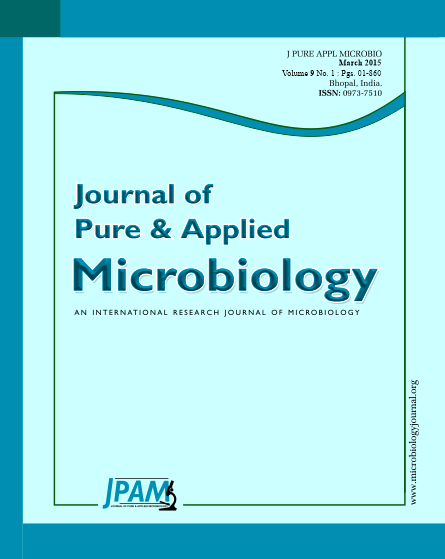Alternaria diseases of citrus caused by Alternaria spp. are important diseases with worldwide distributions. Iran is a major producer of citrus. Recently, Alternaria diseases have been observed in many citrus orchards in southern Iran. The Random Amplified Polymorphic DNA (RAPD) technique is a cost effective approach for assessing the genetic diversity of Alternaria alternata isolated from citrus. In this study, 45 pathogenic isolates of A. alternata collected from diseased leaves of citrus in southern Iran were assessed. Genomic DNA was extracted from young mycelia and eight random decamer nucleotide primers were prepared for RAPD-PCR reactions. The primers yielded reproducible highly polymorphic bands. The highest and the lowest polymorphism information content values were recorded for primers UBC 211 and UBC 203, respectively. According to the cluster analysis, isolates were classified into 13 major clusters with a 0.68 cut-off position. Many isolates from orange cultivars, tangerine cultivars and some isolates from citron, lime, grapefruit and sweet lemons were classified in clades containing a single isolate. All of the isolates collected in the Mamasani region, many from different citrus species and cultivars in Bandar Abbas and Khuzestan, many from tangerines in Jahrom and some from oranges collected in Jahrom and Khuzestan clustered into separate clades. The results indicated a high level of genetic diversity among A. alternata populations associated with citrus collected in southern Iran. Some individuals in the population of A. alternata showed unique genetic structures. In some cases, geographical and host specialization groupings were observed among A. alternata isolates collected on the citrus of different regions.
Citron, Geographical region, Grapefruit, Host specialization, Lime, Orange, Primers, Sweet lemons, Tangerine, UBC 211, UBC 203
© The Author(s) 2015. Open Access. This article is distributed under the terms of the Creative Commons Attribution 4.0 International License which permits unrestricted use, sharing, distribution, and reproduction in any medium, provided you give appropriate credit to the original author(s) and the source, provide a link to the Creative Commons license, and indicate if changes were made.


